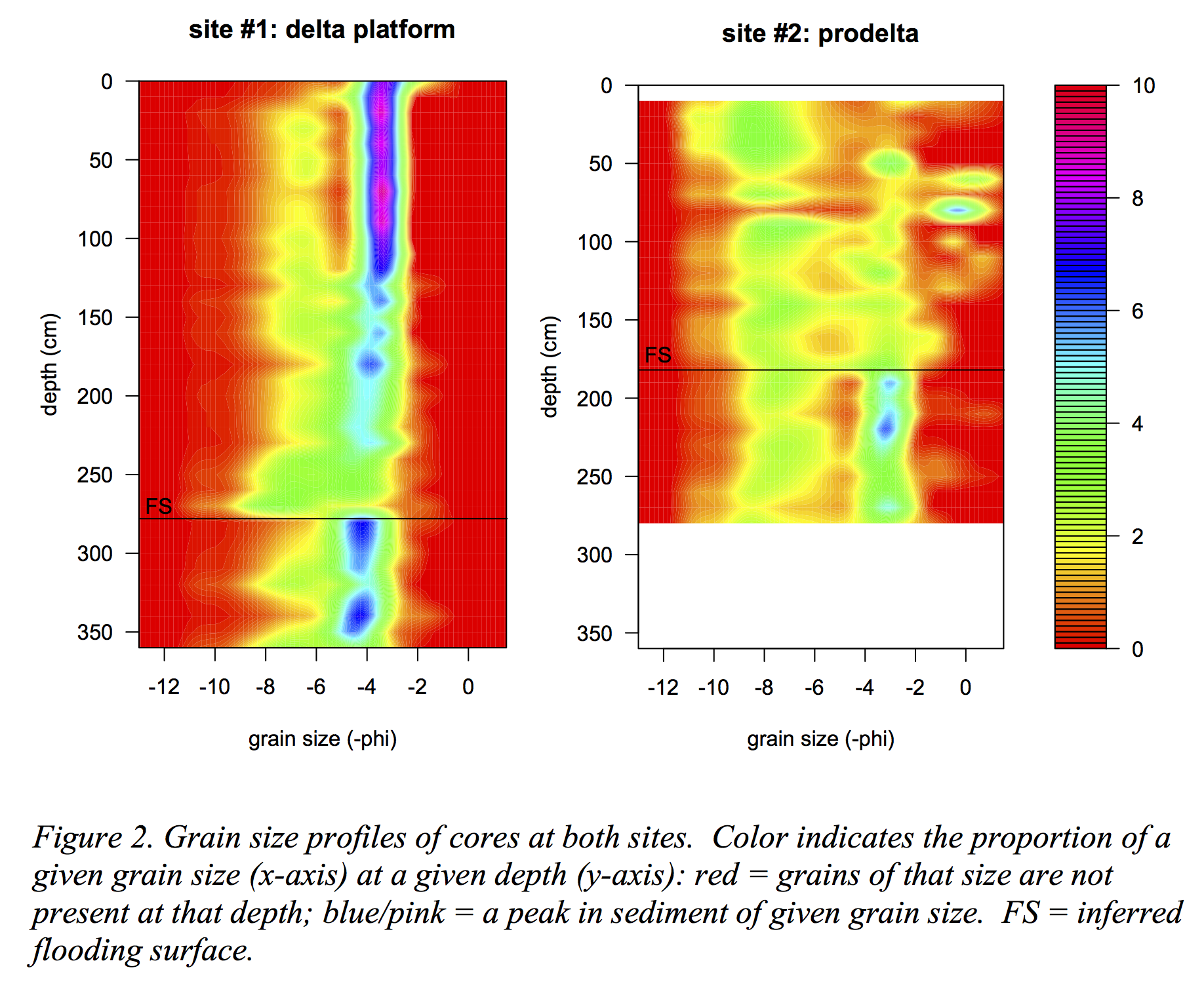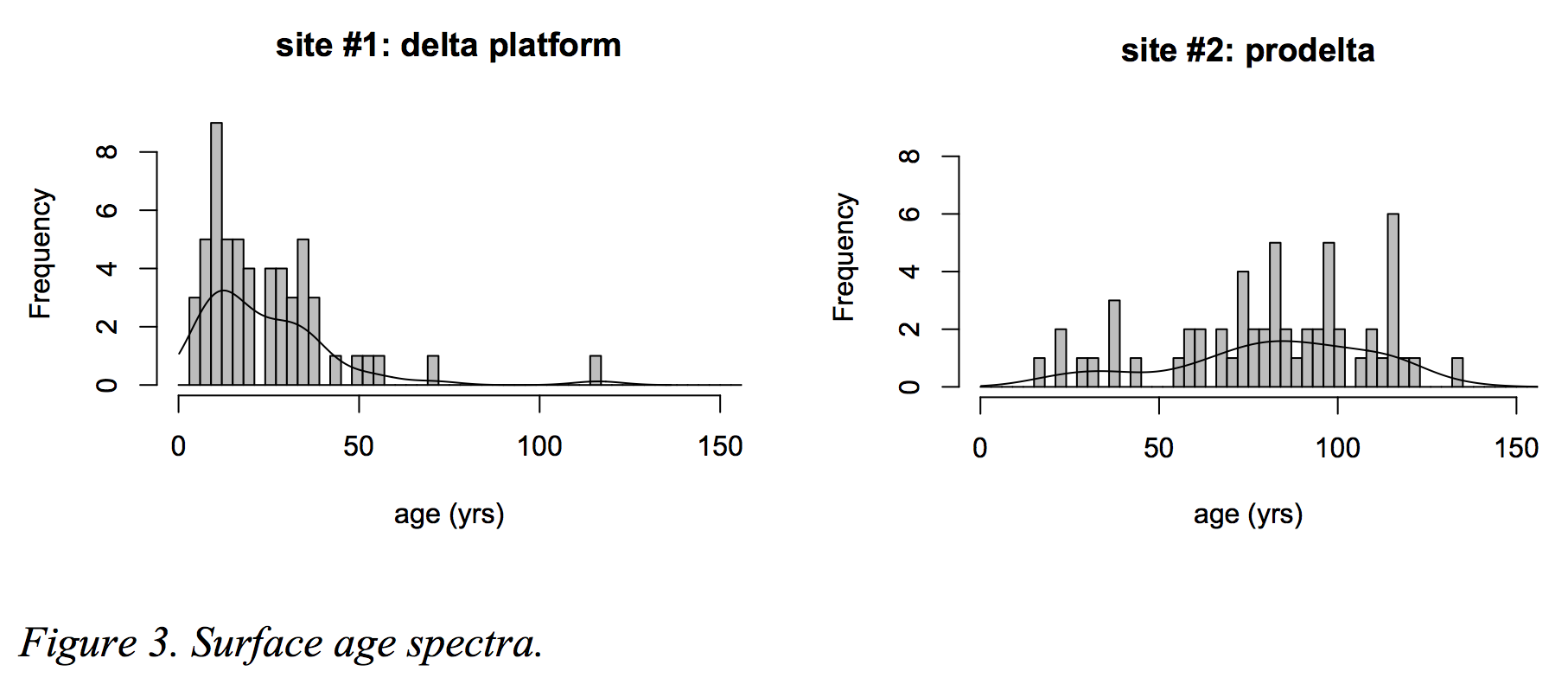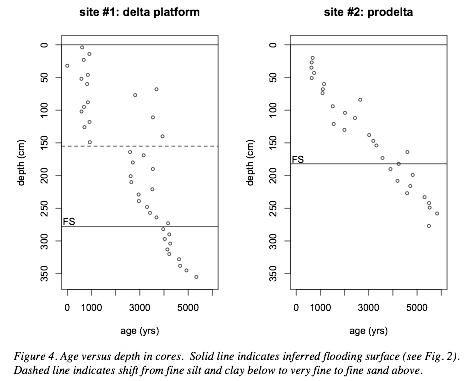Reports: ND854947-ND8: Using Postmortem Shell Ages to Reconstruct Sediment Burial Pathways
Thomas D. Olszewski, Texas A&M University
Introduction
Oil and gas are generated and reside within sedimentary rocks, making an understanding of sediment deposition critical for the discovery and extraction of hydrocarbons. Over many decades, sedimentary geologists have built a sophisticated, process-based understanding of depositional environments at Earth's surface and the stratigraphic architecture of sedimentary rocks in the subsurface. However, as sediments transition from the surface to the subsurface, they experience a variety of mixing and reworking processes that can significantly influence their porosity, organic content, and stratigraphic resolution. A lack of quantitative constraints on the extent of sedimentary reworking after initial deposition limits sedimentary geologists' ability to predict the characteristics of hydrocarbon-bearing rocks.
The objective of this research was to elucidate how the temporal resolution of sediments changes as they transition from the surface to the subsurface using the postmortem ages (i.e., time since death) of molluscan shells to quantify sedimentary reworking. Shells originate within a depositional system (unlike detrital sediment grains), so their postmortem ages reveal how long it took to get from their living habitat at or near the surface to their stratigraphic position within the sediment column. As such, they are natural tracers of depositional and burial pathways and can shed light on the duration and extent of mixing within a sediment column and potentially even the degree of sediment recycling within the larger depositional system.
Sedimentology and Stratigraphy
Two vibracores were collected from Copano Bay, Texas (Fig. 1): site #1 is on the delta platform of the Aransas River and site #2 is from the prodelta. The cores provided both shelly material for dating as well as primary data for defining depositional facies and identifying sedimentary processes.
Sediments of the delta platform environment are dominated by very fine/fine sand, whereas those of the prodelta are dominated by very fine silt and clay (Fig. 2). In the subsurface, cores from both locations show an abrupt shift from sand to silt and clay (278 cm and 182 cm deep, respectively); this sharp decrease in grain size is interpreted as a flooding surface defining the base of a parasequence recording the current cycle of progradation of the Aransas River delta (Fig. 2).
Postmortem Shell Ages
Shells of the bivalve Mulinia lateralis were collected from surface sediment and at approximately one-centimeter intervals in both cores. Postmortem ages of surface shells were estimated using the D:L (right-handed to left-handed) ratio of amino acid enantiomers calibrated using carbon-14. In the cores, the D:L ratio of amino acid enantiomers reached an equilibrium ratio after ~700 years old, so shells were directly dated using carbon-14.
Surface age distribution. Overall, surface shells from the prodelta are older, show greater time averaging, and appear to be less influenced by rapid destruction than the delta platform (Fig. 3).
Subsurface age distribution. In the core from the prodelta (site #2), shell age increases with depth linearly at an average accumulation rate of 0.04 cm/year. Surprisingly, the trend in shell ages appears continuous across the inferred flooding surface at 182 cm depth. The core from the delta platform (site #1) shows a more complex relationship between shell age and depth. From the surface down to 155 cm, there is no strong relationship, with shells ranging from 0 to 3940 years (median of 850 years). Below 155 cm, shell age increases with depth at an average accumulation rate of 0.06 cm/yr. As at the prodelta site, the trend in shall age appears continuous across the inferred flooding surface at 278 cm depth. The abrupt change in the age-depth relationship at ~155 cm coincides with an increase in grain size from silt/clay to sand (Fig. 2). At both locations, the inferred flooding surface dates to ~4000 years ago.
Preliminary Results and Implications
Overall, these results provide valuable insight into the relationship between the rates of deposition and reworking in marginal marine environments and how they affect time averaging – i.e., the ability to resolve time in stratigraphic successions. Overall, shell ages in the clay and silt of the prodelta environment showed less scatter and greater stratigraphic fidelity than shell age trends in the sandier sediments of the delta platform setting. In the muddy prodelta sediments, the scale of time averaging at the surface was largely preserved down core, suggesting limited within-column sediment mixing. In contrast, stratigraphic order in the sandy delta platform sediments was entirely jumbled, resulting in a mixture of shells spanning almost 4000 years (in contrast to a surface age range <50 years). Most remarkably, shell ages appear to increase with depth continuously across the flooding surface that formed ~4000 years ago at both sites – in sequence stratigraphic theory, such surfaces are expected to be associated with a temporal discontinuity. Instead, the most significant disruption to the stratigraphic order of shells is associated with the increase in grain size in the core at Site #1, where sandy delta platform sediments overlie muddy prodelta deposits, a sedimentological trend indicating progradation and shallowing. In the shallower depositional environment, biological and/or physical reworking appears to virtually completely homogenize the sediment column. Several shells in the coarser interval appear to be worked up from the older sediments below, but there appears to be no evidence for incorporation of allochthonously sourced shells. Integrating these measurements on sediment accumulation rate and within-column mixing with the parasequence framework provides a basis for understanding how sediment mixing and temporal resolution change through stratigraphic successions over a scale of centimeters to meters.
Student Impact
The primary student impact of this project has been the support of Ryan Samuels, who successfully defended his M.S. degree in Geology at Texas A&M University under the supervision of PI Olszewski in December 2016 and was awarded his degree in 2017. ACS-PRF funds provided him with two years of support, the opportunity to carry out field work on the Texas coast, and the means to travel to the Amino Acid Geochronology Laboratory at Northern Arizona University to learn how to carry out amino acid dating.















